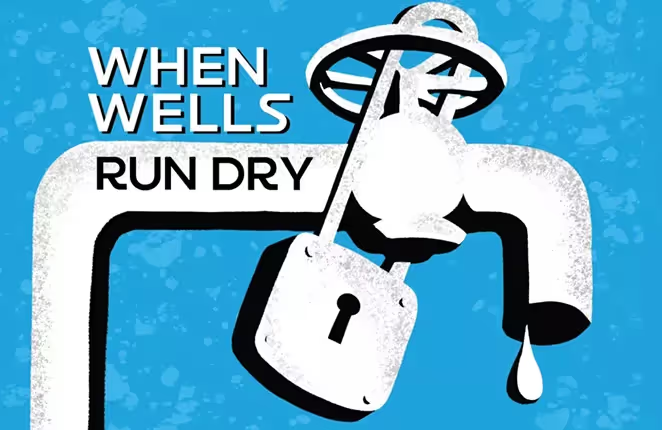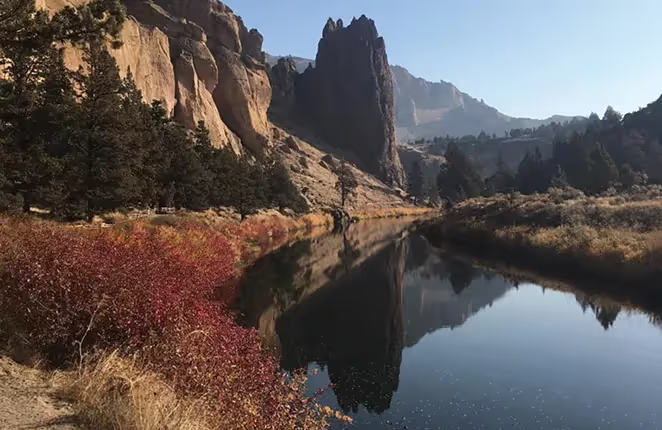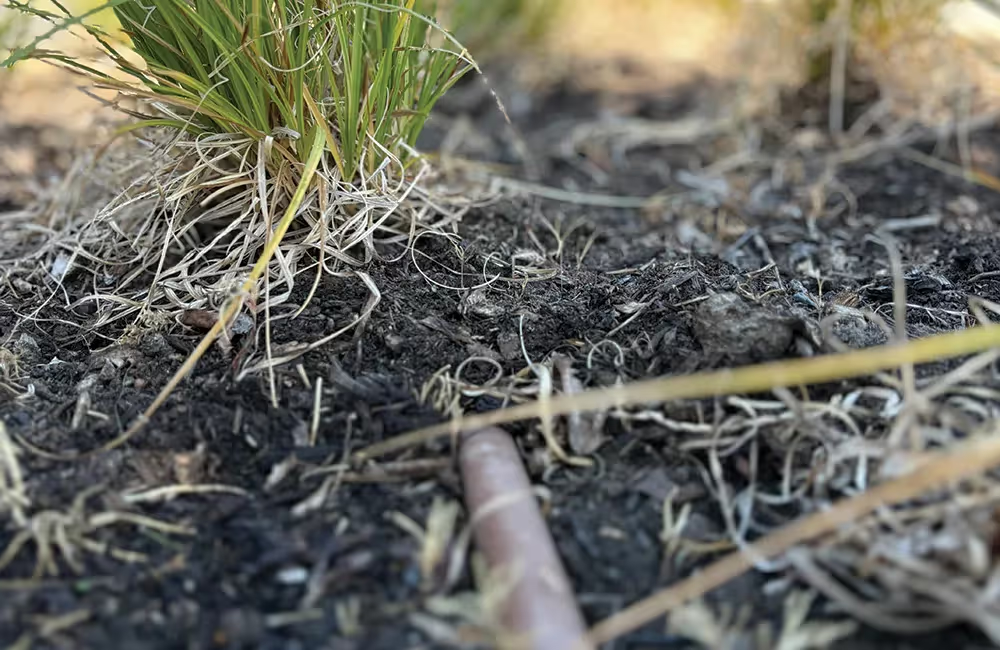Source Weekly: When Wells Run Dry

Oregon cities have tight controls over water consumption. In rural areas, there's little oversight on excessive consumption use.
What happens above ground stays above ground, but below the surface, water doesn't recognize fence lines. The aquifer beneath Deschutes County operates as a single, interconnected system where water use in one location directly affects availability throughout the region. Nearly 35,000 residents—approximately 16% of the county's population—depend on private wells that tap into the same underground sources as those supplying municipal systems.
Yet, while city residents in Bend and Redmond face monitored consumption limits and targets to reduce usage to 143 gallons per person per day by 2040, rural well owners can pump up to 15,000 gallons daily without metering requirements or oversight. This regulatory disparity persists despite mounting evidence of the system's vulnerability: groundwater levels near Bend and Redmond have dropped 20 feet over the past two decades, leaving at least 200 rural households with dry wells between 2022 and 2023 alone.
The Oregon Water Resources Department projects that if levels drop another 5 feet, more than 3,500 domestic wells across the county could fail. Efforts to implement basic monitoring through water meters face significant resistance from property owners, who view such measures as government overreach. This leaves water managers unable to distinguish between modest household use and excessive consumption, even as the shared resource continues to decline.
In an interview on the Source's podcast Bend Don't Break, Redmond Mayor Ed Fitch explained, "We have 20,000 exempt wells in the Deschutes [River] Basin, authorized to get 15,000 gallons a day without any regulation, any input at all from the state. When you look at what the authorized use is, if you take all of the cities in Central Oregon, we are authorized to use about 9 billion gallons of it a year. If you take the exempt wells, they are authorized to use 90 billion gallons a day."

However, the difference is not just between rural and city areas. Between well owners, there can be a major difference in water distribution.
Deschutes County's water system operates on a "first in time, first in right" priority, where the oldest rights holders receive water first, leaving newer users without guarantees, even when an excess supply exists. Local farmer and the President of Oregon Family Farm Association, Matt Cyrus, explained in a recent interview that, "A water right is a real property right, just like land. There's a lot of laws around how it is treated. Normally, those who want to redistribute water are those who don't have it. When people buy a piece of property, they should research their water rights. There's a lot of people who don't understand water rights."
Water rights are permanently tied to properties and their initial agricultural purposes. The most established water entitlements in this region date back to the 1870s-1880s and were originally designated for potato cultivation. The agricultural focus has shifted over the decades due to plant diseases and market demands, and common crops now include wheat, rye, and alfalfa. These historical water privileges hold value even when properties move away from active farming; property owners risk losing their rights if they stop using their allocated water. This "use it or lose it" principle leads some landowners to deliberately consume as much water as possible to protect their entitlements, resulting in wasteful practices like maintaining enormous residential lawns in areas such as east Bend. Since no new rights can be allocated, existing rights have become valuable assets, maintained even by non-farmers, which in turn inflates property values.
To make matters worse, if a well goes dry, many owners are placed on a waitlist for drilling, which can cost thousands of dollars.
.avif)
Understanding the Deschutes Watershed
Water from melting snow in the Cascade Range seeps underground instead of flowing over the surface like typical streams. Snowpack is the largest contributor to streamflow in the Deschutes watershed. Melting snow soaks into the ground to recharge the groundwater aquifer and feeds the Upper Deschutes primarily through springs.
This underground path feeds the Deschutes River through natural springs, creating more consistent water levels throughout the year compared to rivers that fluctuate dramatically with weather patterns. According to the Deschutes River Conservancy, nearly 80 inches of snow and 10 inches of rain account for the total annual precipitation in the Basin. This precipitation joins the water network via natural springs (underground water) or through creeks and waterways (surface flow). Because of its strong link to underground water sources, the Deschutes River has maintained consistent water levels, even in Central Oregon's semi-arid climate.
Human water management has disrupted this natural balance. Reservoirs now capture winter water for agricultural use during dry summer months, creating an artificial seasonal reversal — less water flows in winter when nature intended more, and more flows in summer when natural levels would be lower. This timing mismatch disrupts the natural rhythms of the river ecosystem. Downstream from Bend, farmers divert substantial amounts of summer water for irrigation, further reducing river flows. Tumalo and Whychus creeks already run low naturally during summer and fall, but irrigation demands make these seasonal shortages even more severe. Similar reservoir management throughout the Crooked River system creates comparable disruptions to natural flow patterns.
Declining Water Levels
Groundwater levels near Bend and Redmond have plummeted dramatically over the past two decades. Hundreds of rural Deschutes County households have already experienced dry domestic wells recently, and the Oregon Water Resources Department has warned that continued declines could leave thousands more wells without water in the coming years. While the immediate crisis is clear, understanding its root causes reveals a complex web of factors. This decline in water levels is primarily due to climate change. According to the Oregon Water Resources Department, "Although there have been individual years of wet conditions over the past two decades, on average conditions have been drier than any other 22-year period in the past thousand years." The Deschutes Basin Board of Control expressed cautious optimism at its recent town hall, citing a strong snowpack this season as reason for hope, while remaining guarded about potential improvements to natural streamflow.
Despite having enough snow in the mountains, the area still struggles with major system problems that cause water loss. The Deschutes County Planning Commission reports that this continued decline is affected by pumping (20%) and inefficient water transmission systems (10%). Irrigation canals also lose 40% to 60% of their water through seepage and evaporation, with only about half of the redirected water reaching its intended destination. Water waste from irrigation, including overspray and runoff, is a significant concern.
The effects can be seen throughout the region, such as in the North Unit Irrigation District, located near Madras. Most of the world's carrot seed supply is produced there. However, because the irrigation district holds a junior water right among the other irrigation districts in the Basin, it can have trouble getting enough water to its farmers.

Agricultural Impact
The water shortage becomes more concerning when considering the county's agricultural landscape. Deschutes County leads Central Oregon with over 1,000 individual farms, compared to 680 in Crook County and 480 in Jefferson County. Deschutes County farmers rely on substantial amounts of water to produce crops such as hay or alfalfa. Declines in water affect crop production, livestock feed and income for farmers.
Additionally, Deschutes County experiences widespread confusion regarding proper water use practices, with many agricultural operators employing inefficient flood irrigation methods, applying water to unsuitable terrain, including rocky areas and poor soils, and messing up irrigation equipment operations.
The U.S. Department of Agriculture recommends employing a systematic approach to agricultural practices, including using drip irrigation, reducing runoff and installing a water meter to protect water resources. The USDA notes that, "if the water supply stops keeping up with demand, it may be caused by an increase in water demand, a well capacity (the amount of water produced) problem, or a pump problem. The water meter can be used to identify an increase in demand."
Looking for Solutions
Other regions facing similar challenges have taken varying approaches to water management. Fresno County, California, which receives similar annual precipitation (10.95 inches compared to Deschutes County's 12 inches), has implemented mandatory well metering and permitting programs to manage groundwater resources. Since the Fresno-area North Kings Groundwater Sustainability Agency's new policy began in May, the number of registered wells has more than doubled. The North Kings GSA has pointed out that, "without knowing where wells are located, what depths they are drilled and perforated to, and other construction information, the GSA (Groundwater Sustainability Agency) cannot effectively assess impacts of groundwater level declines on well owners. This information is essential for the continued reliability of both domestic and production wells."
In Oregon, state laws do not require exempt wells to be metered. Oregon classifies wells as exempt from water right permit requirements when they serve specific purposes: stock watering, non-commercial gardening on half an acre or less, or certain domestic and commercial/industrial uses. Domestic wells qualify for exemption when daily usage stays below 15,000 gallons, while commercial and industrial wells receive exemption for usage up to 5,000 gallons per day. As Oregon Water Resources Department Public Information & Resilience Specialist, Jason Cox, explained to the Source: "Water supply wells have exempt uses under state law that do not require a water right permit. Commonly referred to as exempt wells, they can only be used for specific purposes and need to be beneficial, without waste. OWRD has the authority to ensure water usage from exempt wells is consistent with state law, and can require measurement devices if we feel it necessary to protect groundwater and ensure compliance." Proponents of water meters argue that monitoring is essential for understanding usage patterns and protecting the shared groundwater resource.
Water meters are controversial in many rural areas. Property owners cite concerns about privacy and questions about government oversight. As Matt Cyrus put it: "Whiskey's for drinkin', water's for fightin'." Water meters, he adds, "are a hot-button issue and probably should be done on a case-by-case basis." In Redmond Mayor Ed Fitch's opinion, the biggest hurdles Central Oregonians face are the costs of labor and staffing.
Fitch feels strongly that some of these out-of-date policies need to be reassessed, saying, "We have to have some metrics that are agreed upon to implement water conservation, a per-capita use that encourages the best stewardship of water in cities. Outside of cities, I do think we need to reassess the exempt wells." OWRD's Jason Cox added: "Water meters on residential wells can be useful in ensuring water from exempt wells is being used legally, and the department can require measurement of water use for individual well owners. Generally, OWRD would deploy this tool when we are concerned about potential unlawful water use. Meters are also helpful to anyone who wants to monitor their water use and conserve groundwater, which is declining in the Deschutes Basin. We always encourage all water users to do their part to conserve this vital and limited resource."
One step toward resolution was addressed in Oregon House Bill 3419, which would have standardized water measurement and reporting while providing cost-sharing between the government and irrigators for measuring devices. However, the bill did not get a vote this session and will need to be reintroduced in the next legislative session in order to move forward.

